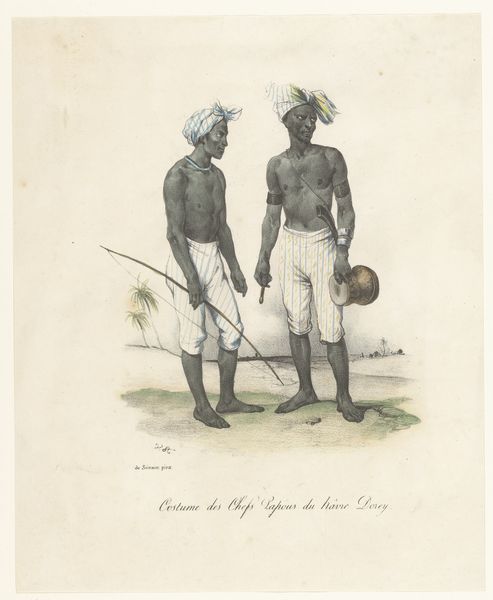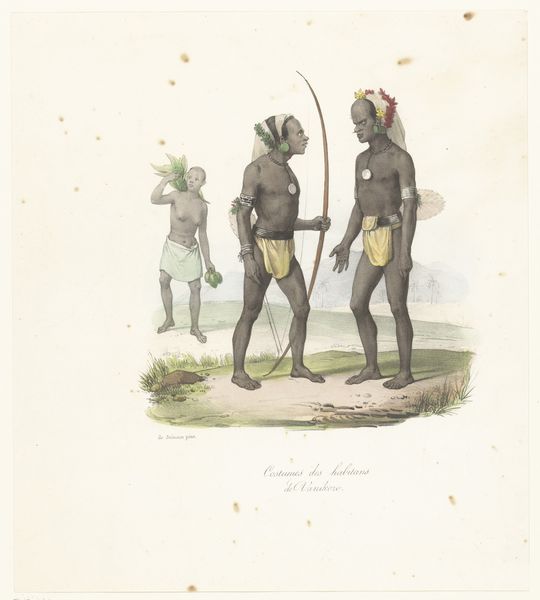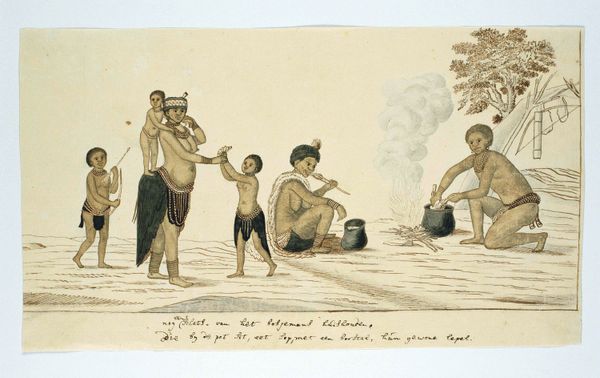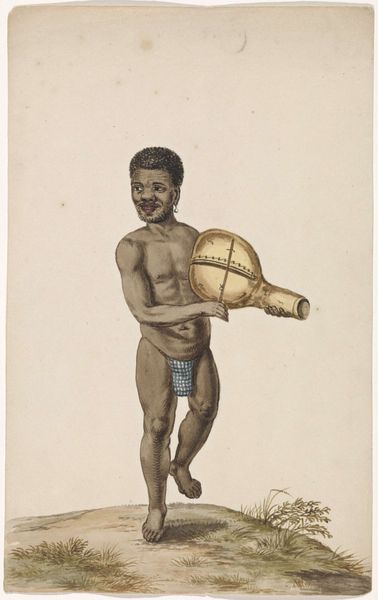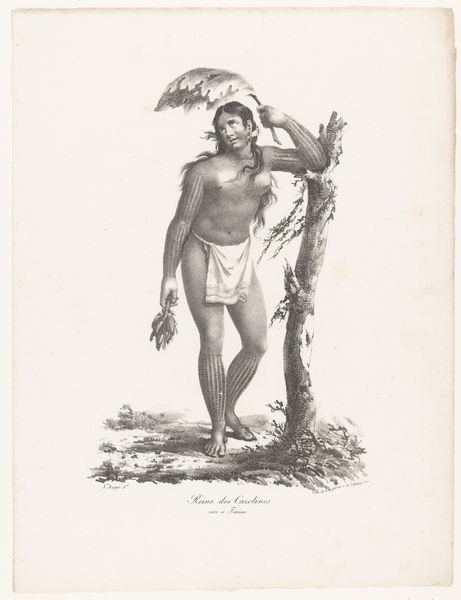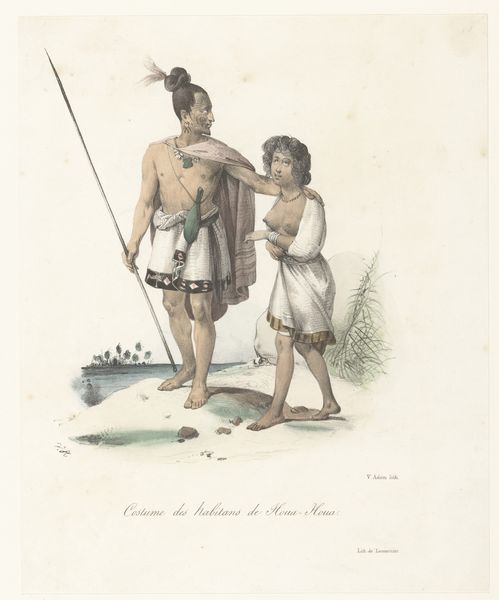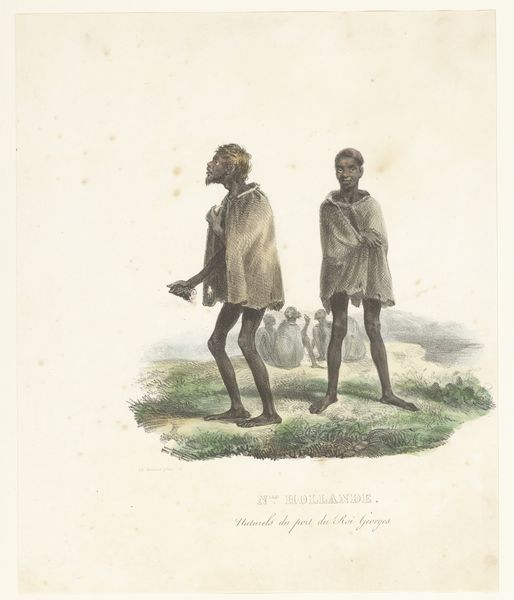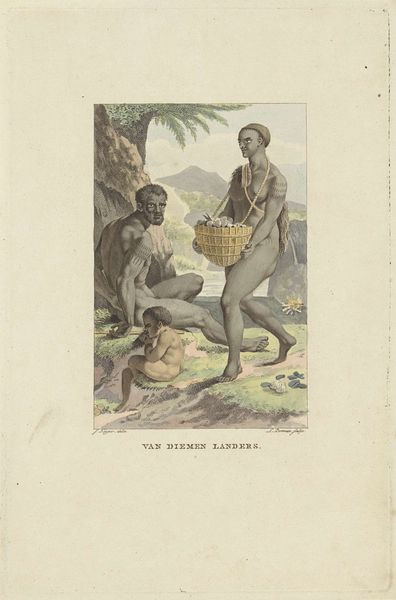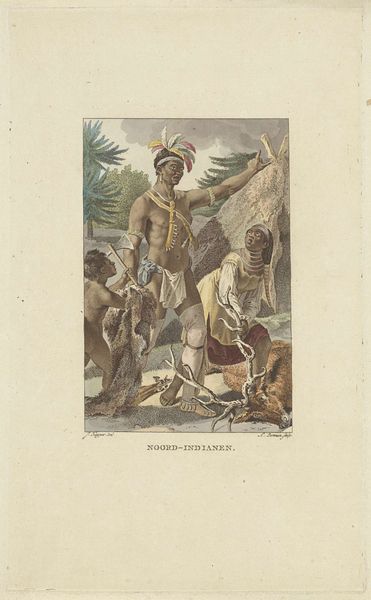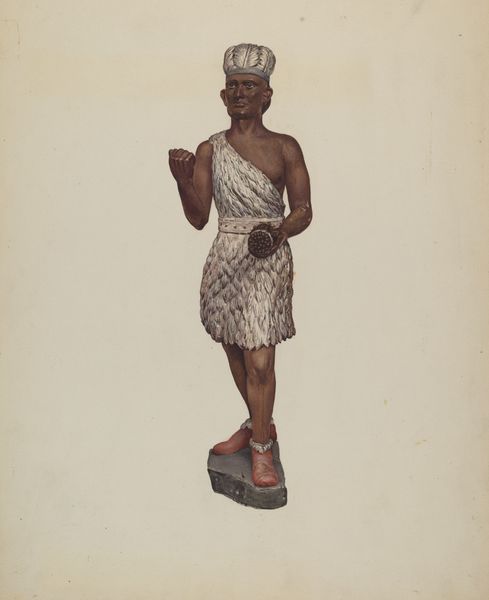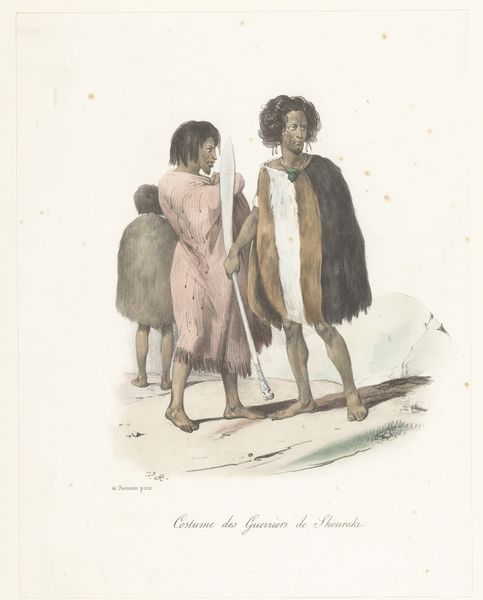
Kleding van de inwoners van Havre-Dorey (Papoea-Nieuw-Guinea) 1830 - 1835
0:00
0:00
#
portrait
Dimensions: height 242 mm, width 194 mm
Copyright: Rijks Museum: Open Domain
Curator: At first glance, I’m struck by the simplicity and directness of this piece. The artist seems primarily interested in ethnographic documentation. Editor: Indeed. We're looking at "Clothing of the Inhabitants of Havre-Dorey (Papua New Guinea)" created sometime between 1830 and 1835 by Victor Adam. It's a watercolor held in the Rijksmuseum collection. Note the rendering of skin tones and the textile details. It speaks volumes about the colonial gaze and the representation of indigenous bodies as resources for knowledge production. Curator: It’s intriguing how the loincloths and accessories are rendered, almost like standardized products rather than unique expressions of individual craftsmanship. Consider the labour involved. Where did the materials for the artist’s pigments come from? And the paper? Whose hands prepared them? It is also difficult to ignore that those yellow textiles are the main element in the composition. Editor: Good points. Let’s think about how this image circulates and its institutional context. The Rijksmuseum, with its own history tied to Dutch colonialism, acquires, displays, and interprets it. What narratives are being reinforced, and which ones are being suppressed by positioning this watercolor as a window into a “traditional” way of life? Curator: Absolutely. And notice how the artist chooses to depict these figures. There's a degree of idealization, perhaps, but also a flatness—almost as if they are specimens. Is it portraiture? Or a study in human form? What does the image itself tell us about its place within the culture of European expansionism? Editor: The political climate and global economic networks supporting such imagery are critical, influencing not only how Europeans perceived these cultures, but also how these cultures began to understand—and sometimes re-present—themselves. This watercolor acts as a lens refracting these complex power dynamics. Curator: Analyzing the composition – the types of brushes, paper texture and even humidity levels where it was painted are key to the cultural interpretation and our appreciation of its original context of creation. Editor: Looking beyond art history’s traditional concerns of authorship and aesthetics allows a wider analysis and sheds light into our present, while accounting for historical dynamics and legacies.
Comments
No comments
Be the first to comment and join the conversation on the ultimate creative platform.

